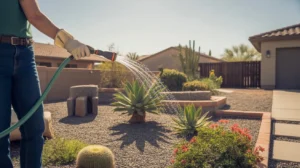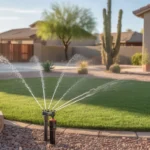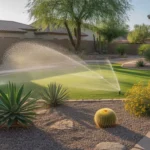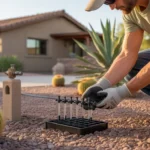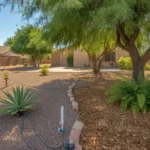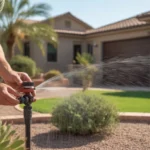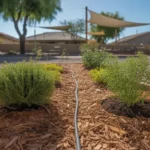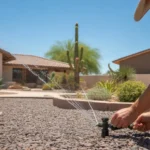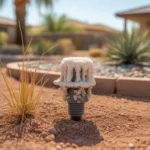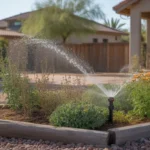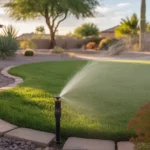As summer temperatures soar in Mesa, keeping your yard properly watered becomes both more critical and more challenging. During a heatwave, plants are under extreme stress and need consistent moisture to survive the sunblast. However, watering incorrectly can be wasteful and even damaging. To help your landscape beat the heat, it’s important to know the right times and techniques to irrigate during periods of intense heat.
The Risks of Midday Watering in Mesa
One of the biggest mistakes Mesa homeowners make during a heatwave is running sprinklers or hoses in the middle of the day. While it may seem like an emergency response to wilting plants, watering during the hottest hours can actually do more harm than good.
First, a large percentage of the water applied will evaporate before it can soak into the soil, wasting this precious resource. What moisture does reach the ground will heat up rapidly, potentially scalding tender roots and stressing plants further. Damp foliage is also prone to scorching in direct sunlight, leaving unsightly burns on leaves.
Additionally, excess humidity from midday watering can contribute to fungal diseases, which thrive in warm, moist conditions. Wilting is a defense mechanism plants use to minimize moisture loss, and it doesn’t necessarily mean they need immediate water. Resist the urge to cool plants off with a quick spray, as this can interfere with their natural heat responses.
The Best Time to Water During a Mesa Heatwave
To maximize efficiency and plant health, the ideal time to water during a heatwave is in the early morning hours, between 4am and 8am. Temperatures are at their coolest, allowing water to percolate deep into the soil before the sun and heat intensify. Moisture will be used by plants throughout the day.
If you can’t water in the morning, the next best option is in the evening, after 6pm. While night watering can leave plants damp and prone to fungus, it’s still preferable to midday irrigation. Just be sure to direct water at the soil, avoiding foliage that won’t have time to dry before nightfall.
Regardless of the time of day, always water deeply and thoroughly. This encourages roots to grow deeper into the soil, where moisture is more stable. Frequent, shallow watering leads to weak surface roots that are more vulnerable to heat and drought stress.
Adjusting Irrigation During Extreme Heat
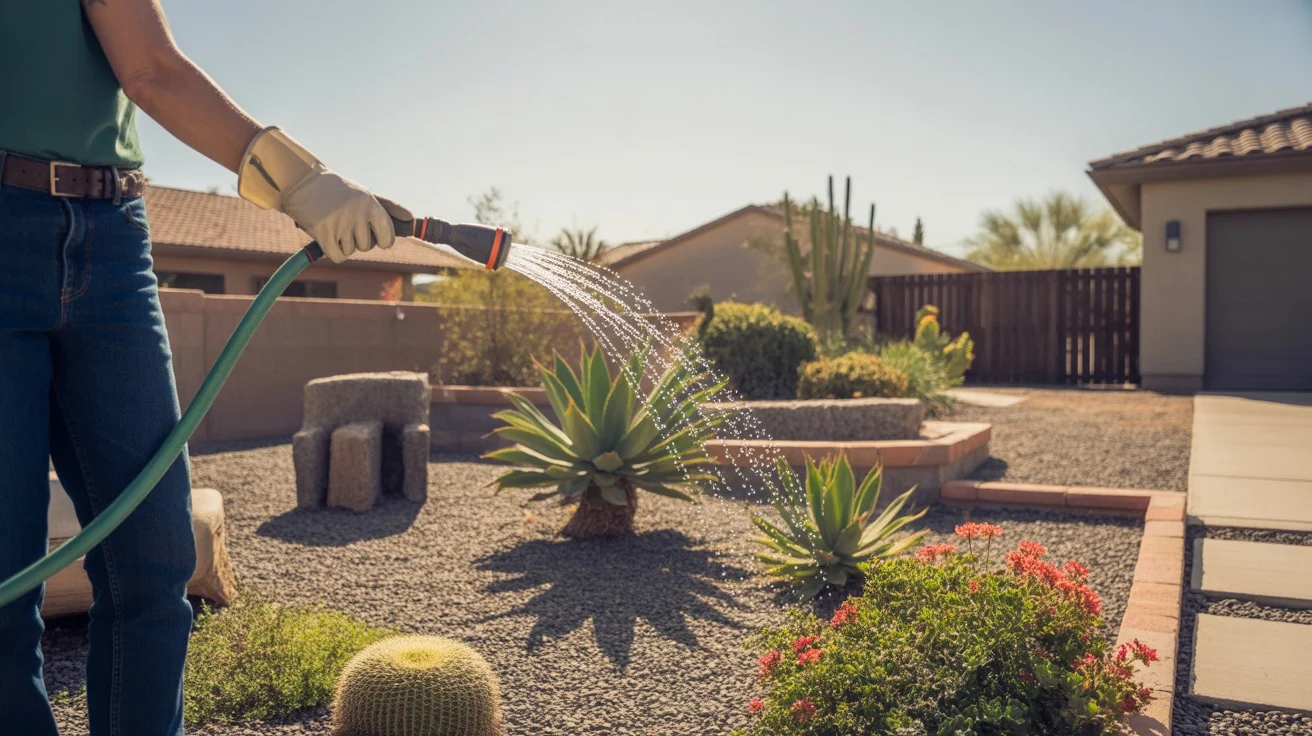
During a heatwave, plants lose moisture much faster than normal due to increased evaporation and transpiration. This means they need more water to stay hydrated and cool. One way to provide sufficient irrigation is to increase the frequency of your watering sessions.
If you normally water deeply twice a week, consider adding a third cycle during extreme heat. This will replenish soil moisture without applying too much water at once, which can lead to runoff and waste. Be sure to maintain the same total amount of water per week to avoid overwatering.
It’s also important to check your irrigation system for leaks, clogs, or misdirected sprinkler heads. Faulty equipment can lead to uneven watering and drought stress in parts of your yard. Walk the property regularly to spot and fix any issues before they impact plant health.
Monitoring Soil Moisture During a Heatwave
The best way to know if your plants are getting enough water is to check the soil directly. Use a moisture meter or simply dig down a few inches with a trowel in various parts of the yard. The soil should feel evenly moist but not soggy or muddy.
Pay extra attention to plants growing in hot, sunny areas, as well as those in containers or raised beds, which dry out faster. Drought-sensitive plants like impatiens, hibiscus, and hydrangeas may need additional water to prevent wilting and leaf drop.
On the other hand, desert-adapted plants like cactus, agave, and many native species are designed to withstand intense heat and drought. Overwatering these plants can lead to root rot and other issues. Stick to their normal watering schedule unless you see signs of severe stress.
Mulching to Conserve Moisture and Cool Roots
One of the best ways to maximize water efficiency during a heatwave is to mulch your planting beds and around trees. A 3-4 inch layer of organic mulch like wood chips, shredded bark, or straw will insulate the soil, keeping it cooler and reducing evaporation.
Mulch also prevents soil compaction and crusting, allowing water to penetrate more easily. As it breaks down, it adds organic matter to the soil, improving moisture retention and root health. Just be sure to keep mulch a few inches away from plant stems and tree trunks to prevent rot.
In areas with rock or gravel mulch, consider adding a layer of organic matter underneath to improve soil quality and water-holding capacity. This can be especially helpful for plants struggling in the reflected heat of stone surfaces.
Providing Temporary Shade During a Heatwave
In addition to proper watering, providing temporary shade can help plants survive a heatwave. Shade cloth, umbrellas, or even bed sheets can be suspended over sensitive plants to block the harshest midday sun.
This is especially helpful for seedlings, transplants, or plants that are already showing signs of heat stress. Shade should be applied during the hottest part of the day, typically from 11am to 3pm, and removed in the evening to allow for natural cooling.
For container plants, moving them to a shadier spot during a heatwave can prevent soil from overheating and drying out too quickly. Just be sure to acclimate sun-loving plants gradually to avoid shock.
Avoiding Fertilizer and Pruning During Extreme Heat
While it may be tempting to give plants a boost during a heatwave, applying fertilizer can actually add to their stress. Fertilizer encourages new growth, which requires more water and energy than mature foliage. It can also burn roots if applied to dry soil.
Similarly, avoid heavy pruning during a heatwave, as this removes leaves that shade the plant and help cool it through transpiration. Light grooming to remove dead or damaged foliage is fine, but save major pruning for cooler weather.
If you need to plant or transplant during a heatwave, do so in the evening and provide plenty of water to help roots establish. Adding a layer of mulch and temporary shade will also aid in the transition.
By watering at the right times, monitoring soil moisture, and providing extra care, you can help your Mesa yard beat the heat and emerge from a heatwave healthy and vibrant. Stay vigilant and responsive to changing conditions, and don’t hesitate to give plants the extra TLC they need to survive the sunblast.

